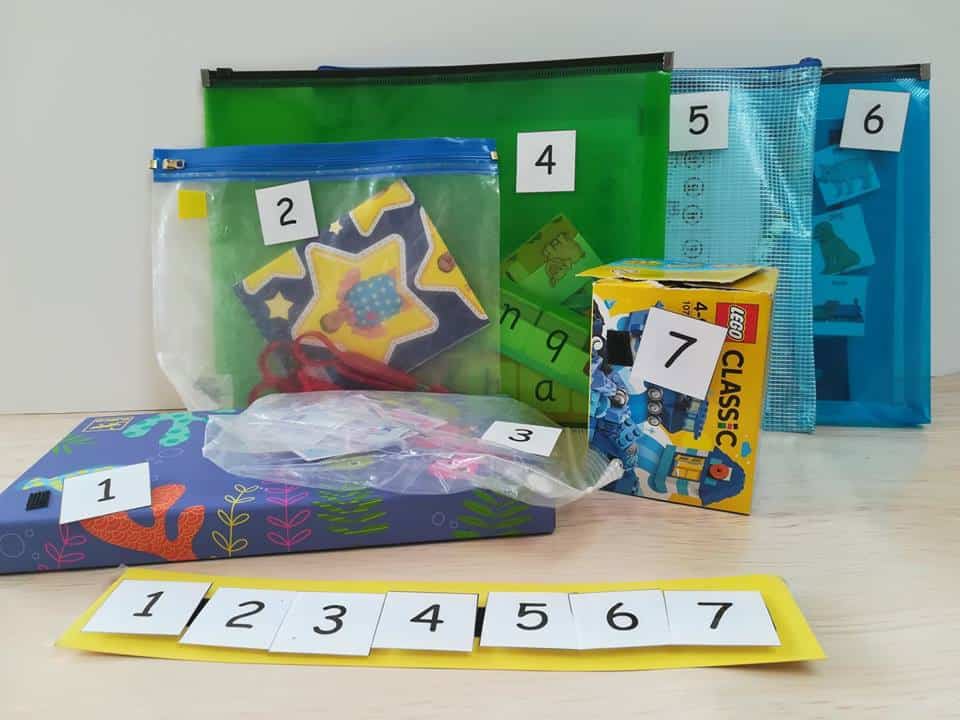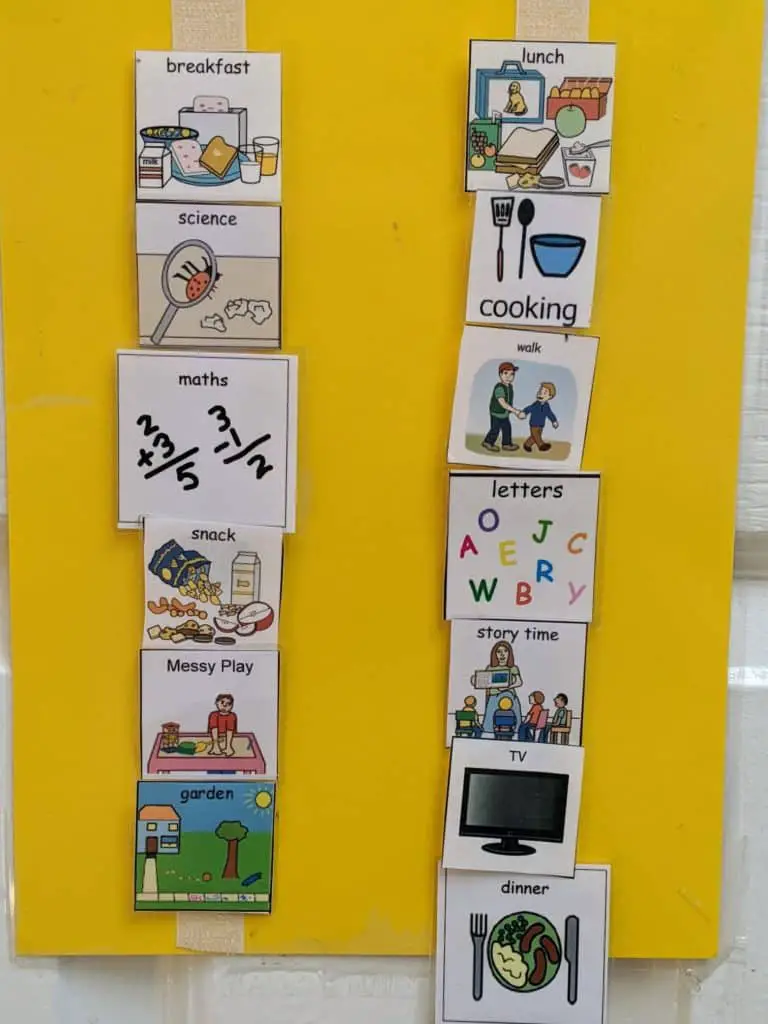Published on 05/10/2020.
We hope everyone is keeping safe during this difficult time. Changes in routine are never easy, and they can be even more challenging when sheltering in place.
We contacted Jade from the UK again to see how she has been managing with homeschooling her two boys and if she had any insights that she could share.
Jade is an inspiration to us, and we hope you enjoy reading her blog post as much as we did.
Unexpected change is never good for my two autistic children; it brings a huge amount of stress and anxiety. However, my kids also thrive on routine, and our home is their safe place without the social expectations and pressure of the outside world.
Home-schooling our kids was not something we have chosen to do, but now we are getting the hang of it I am enjoying the family time we have. In this post, I will share some challenges and what has been working for us.
Unexpected Change
Change is always a big challenge for my boys, aged 4 & 6. Usually, we spend lots of time preparing them for changes with social stories, visuals, and a plan would be in place. Life doesn’t always give you time for preparation, and the first couple weeks of the lockdown at home were difficult.
I was actually ill at first, so we had lots of downtime with the TV and iPad. It probably helped that very few demands were placed on the kids at this time. It is not easy to explain why they couldn’t go to school or soft play, but using visual social stories has really helped.
Change can be a trigger for significant anxiety and then result in challenging behavior. This is also why routines are so important for my kids. Routines provide security in sameness, which reduces stress and anxiety.
Using Routines
Routine provides order within a constantly changing and confusing world. Routines provide predictability and make it much clearer what is expected to happen. Doing things regularly in the same order provides stability and understanding many autistic children need to thrive.
My son finds it difficult to predict what is expected of him, he cannot read people or understand what is being asked verbally. He can, however, learn a routine and then repeat it.
Our lives are full of little routines, from bedtime to hand washing. The familiarity of these routines allows the kids to be relaxed as they know what needs to be done and what comes next. Knowing that our kids need this structure, we decided to put a home school routine in place quickly and stick with it.
Just because you have a strict routine doesn’t mean it is all work; we all need time off and build the downtime into the routine.
Our routine
We already have a set evening and bedtime routine that has stayed the same. Weekends are pretty relaxed with slow mornings, TV, and playtime. Monday – Friday from 9-3 pm is our home school time because the boys are still young a lot of the learning is play-based.
The main rule is that the TV and iPads are off on weekday mornings and unavailable until after 3 pm. This means we don’t have to fight to get their attention and come at 3 o’clock when they are ready for some downtime they have the screens.
Our kids are already familiar with Attention Autism, so this is how we start our mornings with a short attention-building activity. Then most mornings, this is followed by their TEACCH bags; TEACCH is a structured teaching method that helps us to do some tabletop activities, including some worksheets with my 6-year-old. Using methods the kids already know makes it so much easier.

If I gave my son a worksheet, he wouldn’t do it, but if I put it in his TEACCH bag, he will because this is a learning format that he is familiar with and works for him. I remember when we first started to do TEACCH, it was hard to implement because it was a change, but once it is familiar, it becomes really easy, and the hard work was worth it.
The rest of the day is split between various activities, including:
- Work-based activities like maths, science, reading, and writing

- Play-based activities including stories, messy play, games
 , art, and crafts
, art, and crafts - Fun activities such as LEGO, puzzles, baking, and music
- Outdoor time is usually a break in the garden in the morning and a walk outside in the afternoon.
I find my kids are better at concentrating first thing, so we get the more work-based activities done then and have the fun and play activities later in the day. Physical time and breaks are also really important as my boys are so physical. If the weather is bad, we try and do something active inside like dancing or some gym ball activities.
My plan is to now try and have theme weeks; we have just done senses and the human body. Using a theme is probably more for my benefit as it helps me plan out the activities for the week better. Plus I feel like they are learning something new.
Transition
Moving from one activity to the next can sometimes be a challenge for the boys, and this is where our visual schedule is so important. Every evening I set up the schedule for the next day so that when the boys come down the next morning, they can see everything happening that day.
They can see clearly what is happening now and what will come up next. I also have the schedule on an app on my phone, so we can still follow the routine easily when we are upstairs or outside.

It is also really important that I let them finish the activity they are doing before we move on, we are so used to always warning the kids and they have a clear schedule that it is rarely an issue now.
Challenges
One of the biggest challenges for me was not having all the resources or knowledge of the systems in place at my son’s school. He regularly does things like the Downs Ed reading program, Handwriting without tears, and TACPAC at school.
at school.
Whilst I had a little understanding, I didn’t have the resources for these programs or know how it was done at school. With kids who thrive on routines and predictability, it can be a big issue if I try to do a school activity but not in the same way it is at school.
Some generalizations e.g. different person and location might be ok, but if I change the order and the type of resources used as well, it can be very confusing and stressful. This challenge was easily overcome by talking to my son’s teacher.
She gave me crib sheets explaining the order activities are carried out at school and has lent us resources from school to use at home.
explaining the order activities are carried out at school and has lent us resources from school to use at home.
The other big challenge for me is having two kids who require 1-1 attention when it comes to structured learning. My husband and I still have other commitments and can’t dedicate all our time to homeschooling the kids.
Having said that, we can structure it so at least 3-4 mornings a week we have about 2 hours where we spend some 1-1 time to do those activities that need the 1-1 time. The rest of the time, we try to split the homeschooling between us so we can get our other work done too.
The good bits
Now we have a routine in place the kids are doing really well, yes some days, it’s hard to keep their attention, but on the whole, they are both engaged and joining in, which has been amazing. Speaking to other parents, many kids thrive without school’s social pressure.
I know it will be hard to go back to a different routine, but whilst we are in this position, I enjoy spending time as a family. The boys are interacting together far more, which they rarely did before.
I love the slower mornings, the kids still get up early, but we don’t have to jump out of bed and be ready in an hour. We can take our time. This has allowed us a lovely time as a family snuggled up in bed, reading stories or leisurely cooked breakfasts.
The slower mornings have also allowed us to work at independent dressing skills and the things we often just do for the kids because it is quicker, and we are in a rush.
Free Resources
Companies are all trying to help with homeschooling; it can be a little overwhelming with tons of emails with suggestions for home learning activities. Having said that, there is some amazing stuff out there. Twinkl is fantastic for worksheets and visual learning resources; I have been printing loads while it is free.
for worksheets and visual learning resources; I have been printing loads while it is free.
The Picture Exchange Communication System (PECS) website has added some activity ideas to their website and included the visual symbols on a printout, which is useful for kids like mine who rely on visuals. I have started doing TACPAC with my son, which is a great sensory activity to music perfect for sensory seekers, and they are offering a set for free at the moment.
has added some activity ideas to their website and included the visual symbols on a printout, which is useful for kids like mine who rely on visuals. I have started doing TACPAC with my son, which is a great sensory activity to music perfect for sensory seekers, and they are offering a set for free at the moment.
I have also been taking advantage of the training sessions being offered virtually on platforms like Zoom in the evenings, as it is a great opportunity to learn without having to travel, which can often be a barrier.
How are we managing?
It has surprised me how well we are coping; all things considered, every home will be different, but putting the routine in place has worked really well for us. My main priorities are that everyone is happy and healthy, so for the kids to be thriving is fantastic.
With the kids, anxiety levels are reduced, and my husband and I are far less stressed and able to enjoy family time more, which is not always the case when stress levels are high.
We cannot control when things will change or how that will happen, so I am focused on a happy home, and thankfully so far, we are doing ok.
I hope you have found what works for your household; I recommend asking your school for help or advice, but when this isn’t possible, other professionals may be able to help, such as speech therapists or health visitors. I always find other parents are a brilliant source of information and support.
You can read Jade’s previous blog post about struggling with sleep by clicking here

Jade writes about autism on her blog, The Autism Page . Jade is a full-time mom to her two boys, aged 6 & 4. After her eldest son was diagnosed with autism, she began blogging to share information and resources to help other parents. Jade lives with her husband and boys in the West Country, UK, between Bristol and Bath.
. Jade is a full-time mom to her two boys, aged 6 & 4. After her eldest son was diagnosed with autism, she began blogging to share information and resources to help other parents. Jade lives with her husband and boys in the West Country, UK, between Bristol and Bath.
References
- https://www.twinkl.co.uk/

- https://pecs-unitedkingdom.com/support-at-home/

- https://tacpac.co.uk/news/free-access-to-set-5

